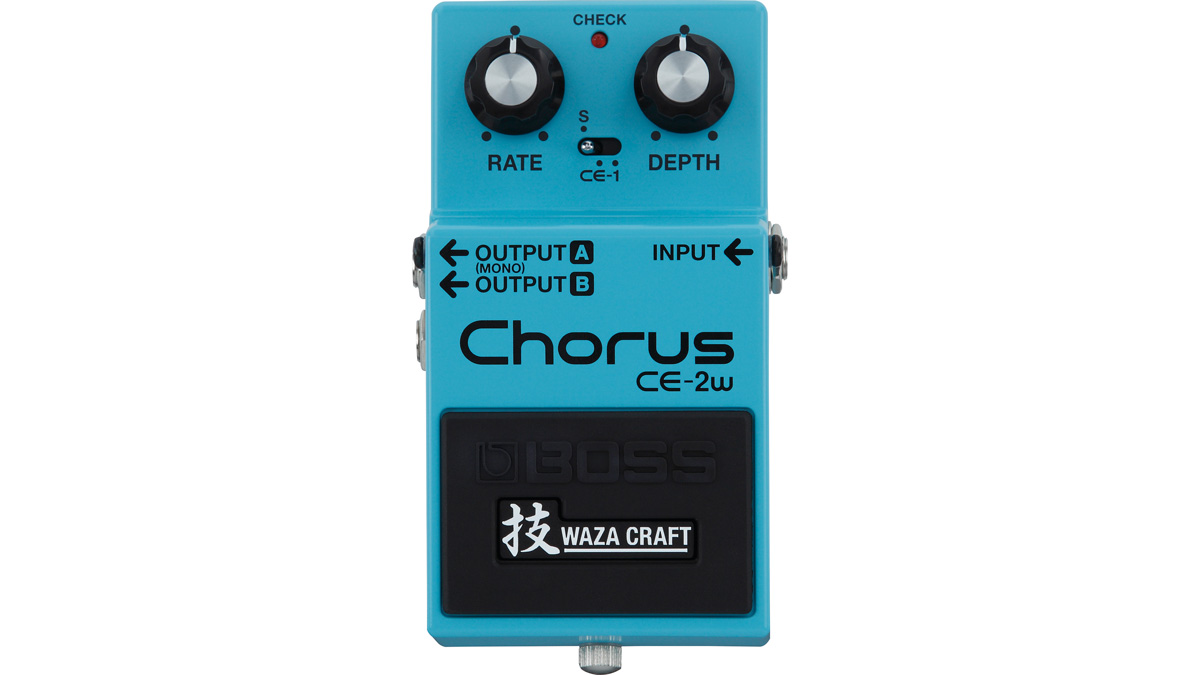Guitar World Verdict
With its foot-operable functions and stereo operation, the Julianna expands upon Julia's functionality. Once again, the chorus and vibrato are impressive, but blending the two yields some fascinating hybrid sounds to explore.
Pros
- +
Stereo operation.
- +
Adjustable dry blend offers many options between dry, chorus and vibrato.
- +
Unusual adjustable parameters’ LFO-sync’d LED.
- +
Tap tempo.
- +
Momentary rate change.
Cons
- -
No onboard preset slots.
You can trust Guitar World
When we took a look at Walrus Audio’s Julia pedal back in issue 442, our only regret was that it wasn’t a stereo pedal.
That appears to have been remedied now with the release of the Julianna Deluxe Chorus/Vibrato pedal, which is not only stereo but also adds to the Julia’s feature set with a tap-tempo footswitch, a connection for an external expression pedal and more.
The key to dialling in a sound here is the D-C-V knob that runs from totally dry (D) to totally wet (V for vibrato) with traditional chorus around the middle and nuanced blends throughout the travel.
This is what makes the Julianna such a prospect for dialling in new sounds against rivals, which simply offer a toggleswitched choice between chorus and vibrato. That knob is complemented by a choice of sine, triangle and a new quirky random waveform. There is also Lag, a knob that determines the centre delay time the LFO modulates from, widening the pitch shift for a richer effect.

• Boss CE-2W Waza Craft Chorus
The original Boss CE-1 and CE-2 units are the much-revered pedals that started the whole chorus thing off, and this CE-2W recreates their original chorus and vibrato tones with ease.
• JHS Pedals Emperor V2
Based on the sound of the vintage Arion SCH-1, this analogue chorus/vibrato with a tap-tempo footswitch features three selectable waveforms and an expression pedal input.
• Fender Bubbler
This pedal lets you switch between two independent chorus sections, each with Rate and Depth controls. A Sensitivity control offers dynamic control of modulation rate.
If you wish to run in stereo, the D-C-V knob turned fully counter-clockwise will send your dry signal to the one output and wet to the other for a two amp wet/dry setup, but you can turn it to adjust the stereo image.
The tap-tempo footswitch would be a useful asset on its own, but it has a secondary function: you can set two values for the Rate knob and hold the footswitch to toggle between the two rates with the transition ramping very naturally, rotary speaker-style.
Likewise, there’s a Drift feature that gently speeds up and slows down the LFO rate between two user-set values when the Bypass footswitch is held down. In addition, an Expression pedal can control depth, rate or both.
Verdict
While the Julia remains a great pedal, the Julianna – with the same well-rounded warm tone – opens up a lot more possibilities, both in the sound variations available and the extra foot-operable options to enhance a performance.
It will do traditional chorus and vibrato, but its intrigue lies in the way it fills in all the hybrid shades between those two primary colours to zero in on the exact bespoke modulation you need.
Specs
- PRICE: $249 / £225
- ORIGIN: USA
- TYPE: Chorus/vibrato pedal
- FEATURES: True bypass
- CONTROLS: Rate, Depth, Lag, D-C-V blend, Div switch (quarter note, eighth note or quarter triplet), Shape switch, Bypass footswitch, Tap footswitch, internal DIP switches for Tap or Expression
- CONNECTIONS: Standard inputs (mono, stereo), standard outputs (mono, stereo), tap/exp
- POWER: 9V adaptor, 100mA minimum (not supplied)
- DIMENSIONS: 70 (w) x 121 (d) x 60mm (h)
- CONTACT: Walrus Audio
Trevor Curwen has played guitar for several decades – he's also mimed it on the UK's Top of the Pops. Much of his working life, though, has been spent behind the mixing desk, during which time he has built up a solid collection of the guitars, amps and pedals needed to cover just about any studio session. He writes pedal reviews for Guitarist and has contributed to Total Guitar, MusicRadar and Future Music among others.
“The original Jordan Boss Tone was probably used by four out of five garage bands in the late ’60s”: Unpacking the gnarly magic of the Jordan Boss Tone – an actual guitar plug-in that delivers Dan Auerbach-approved fuzz
“This is a powerhouse of a stompbox that manages to keep things simple while offering endless inspiration”: Strymon EC-1 Single Head dTape Echo pedal review












